The pollution burden of the San Diego Bay can be found in its water and in the bay floor. The sources of pollution are many, but the most toxic pollution has come primarily from the military and shipyards, other bayside industries, and the South Bay Power Plant. Urban runoff also contributes to the pollution burden.
Pollutants of primary concern include Polychlorinated Biphenyls (PCBs), Polynuclear Aromatic Hydrocarbons (PAHs), Tributylin Tin (TBT), arsenic, copper, lead, mercury, zinc along with the pesticide Diazinon.
EHC's History and Successes in San Diego Bay
EHC's Clean Bay Campaign began in 1987 with the goal to clean up, restore, and protect San Diego Bay as a clean and healthy multi-use water resource. In March 2012, the Regional Water Quality Control Board ordered a cleanup of the 143,400 cubic yards of toxic sediments from the bottom of San Diego Bay. After a 20-year battle, the Regional Board finally held polluters accountable, and the bay will have a chance to return to a cleaner state.
Blueprint for a Clean Bay
Even as the newly formed Clean Bay Campaign began tackling the problems of cleanup and strengthening existing regulations, it started formulating its long-term vision. Published in 1991, the Blueprint for a Clean Bay set out a 10 point plan.
- Sustain the Use – decisions must be considered in context of sustainable use; what is left of natural areas must be protected.
- Enforce the laws – ensure permit compliance, make chronic violators accountable, impose mandatory fines for violations of NPDES permits, assess full find for Clean Water Act violations
- Prevent pollution discharge – reduce use of toxic and hazardous materials, permit no new discharges into the Bay, reduce poison runoff, stop discharges from boats and ships, adopt pesticide use reduction programs
- Cleanup toxic hot spots – evaluate cleanup plans according to health and safety based criteria
- Protect Wildlife Habitat – stop wetland destruction, create the South Bay National Wildlife Refuge; Port District should emphasize environmental protection
- Make the Bay fishable – Stop destruction of fish habitat and nursery areas; expand fish habitat and increase the numbers and diversity of fish; test fish for contamination
- Monitor the Bay – set up a San Diego Bay Monitoring program; conduct marine life sampling; nominate the Bay as an "Estuary of National Significance," set standards for a Clean Bay
- Military must cleanup – set a schedule for toxics use reduction; clean up old dumps; comply with existing laws
- Provide for appropriate recreation – stop the flow of sewage to the Bay; encourage boating of appropriate intensity; connect open space and park systems to the Bay
- Involve the public – encourage people to be good stewards of the Bay: to speak out, to hold their representatives accountable, to reduce their impact on the Bay
Cleanup of toxic sediments
Toxic sediments in at least eight sites have been cleaned up, but it's never an easy process. Efforts to clean up toxic sediments in San Diego Bay follow a similar pattern: clear evidence of pollution and the polluter are identified; cleanup levels are established by the Regional Water Quality Control Board; a Cleanup and Abatement Order is issued by the RWQCB; the responsible party appeals the Order; EHC intervenes to uphold or strengthen the Order. The polluter spends years fighting the Order. The best cases result in cleanup actually taking place. In the worst case, the toxic sediments around the shipyards, the foot dragging has continued for more than 20 years.
- Paco Terminals was one of the first advocacy efforts for the Clean Bay Campaign, and its history is included as an example of the watchdogging and advocacy required.
- 1979-1985: Tons of copper ore spill into San Diego Bay at the 24th Street Marine Terminal in National City due to faulty loading equipment. Levels of ore in sediment reach 50,000-60,000 parts per million.
- 1986: San Diego Regional Water Quality Control Boards issues a Cleanup Order to reduce copper to 1,000 ppm (10 times above level before spills began).
- 1988: RWQCB fines Paco $50,000 (reduced from staff's recommended fine of $200,000). EHC protests reduction.
- 1989: San Diego Unified Port District named as a Responsible Party along with Paco.
- 1990: Paco files for bankruptcy; is out of bankruptcy by 1991 when it appears that their insurance company may be fiscally responsible for cleanup.
- 1991: RWQCB goes against advice of its staff and weakens cleanup level to 4,000 ppm.
- 1992: EHC appeals the revised order and the State Water Resources Board reverses the Regional Board's decision.
- 1992: Paco and Port unsuccessfully sue the State Board over their decision.
- 1995: Cleanup to 1000 ppm completed!
- Convair Lagoon – PCB's were discovered as a result of the State Mussel Watch Program from 1979-1985. In 1986 the San Diego Regional Water Quality Control issued a cleanup and abatement order to Teledyne-Ryan. PCBs entered the Bay through the storm water system; the contamination was found down to a depth of 10 feet. Seven acres of bay sediments were capped in 1986 and RWQCB issued a new order requiring maintenance, monitoring and repair of the cap. In 2004 evidence of new PCB contamination was found and a new Cleanup and Abatement Order was issued. This has not yet been completed. The site is being considered as a depository for contaminated sediments from the current Shipyard Sediment Site.
- Campbell Shipyard – sediments contaminated with PCBs, copper, zinc, lead, TBT, PAHs, and other petroleum hydrocarbons; cleanup ordered in 1995; cleanup completed in 2003
- The Blob – an underground plume of petroleum hydrocarbons under downtown San Diego was discovered moving toward the Bay. Unocal, Shell, GTF Frost, Golden West Hotel, CCDC, and Transportation and Leasing Company were determined to be responsible parties. Cleanup ordered in 1990; completed in 1991.
Protection from further contamination requires strong regulations, strict monitoring and enforcement, eliminating or reducing the use of toxic chemicals, education, and cooperation. EHC has consistently advocated for protection through the following actions.
- Strengthen Regulations: Basin Plan, California's Bay Protection and Toxic Cleanup Program
- Elimination of toxic pollutants
- EHC successfully appealed a Waste Discharge Permit for failing to require monitoring of Tributylin Tin (TBT), an extremely toxic product that was used to protect boat bottoms. TBT was subsequently
- Pollutants entering the bay from the South Bay Power Plant were eliminated after more than 40 years when EHC's efforts to close down the plant succeeded
- Human health advisories – People need to be informed about the hazards toxic pollution in the Bay can cause. EHC secured the posting of two fish consumption advisories: the first in 1990 and the second in 2006. Now written in English, Spanish, Tagalog and Vietnamese, the County Department of Health Services and the San Diego Unified Port District provide more specific advice in the signs to fishers of the Bay compared to what was originally posted in 1990.
- Shipyard Pollution Prevention: EHC worked with shipyard workers and a consultant to develop a series of opportunities for consideration by the shipyards.
- Military: In 2001 EHC worked with Congressman Bob Filner to introduce the Military Environmental Responsibility Act. A field hearing was held in San Diego and people from across the nation testified on the harm military toxics caused in their communities. The legislation was not passed, but brought much needed attention to the many exemptions the Military claimed from environmental regulations.
- Urban runoff: Recognizing that urban runoff contributes to pollution of San Diego Bay and other water bodies, EHC introduced storm drain stencils in San Diego County with the message "No Dumping – I Live Downstream." Bilingual educational materials were developed as part of our San Diego Bay Watershed Protection program.
- Integrated Pest Management Program for Port of San Diego. EHC provided technical assistance to the Port in development of an IPM program for the maintenance of their parks and buildings.
Restoration – a vision
Watersheds
As part of EHC's San Diego Bay Watershed Protection Program, we advocated for the restoration of Chollas Creek including removal of concrete channels and returning the creekside to a natural riparian habitat.
South Bay Unit of San Diego National Wildlife Refuge
In June 1999, the South San Diego Bay National Wildlife Refuge was officially dedicated, the culmination of more than 20-years of work involving a unique partnership among environmental groups, community residents, and local, state, and federal agencies. The refuge initially conserved 2,200 acres of significant habitat, including essential wetlands and mudflats which are home to more than 560 plant and animal species.
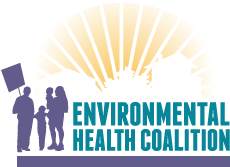

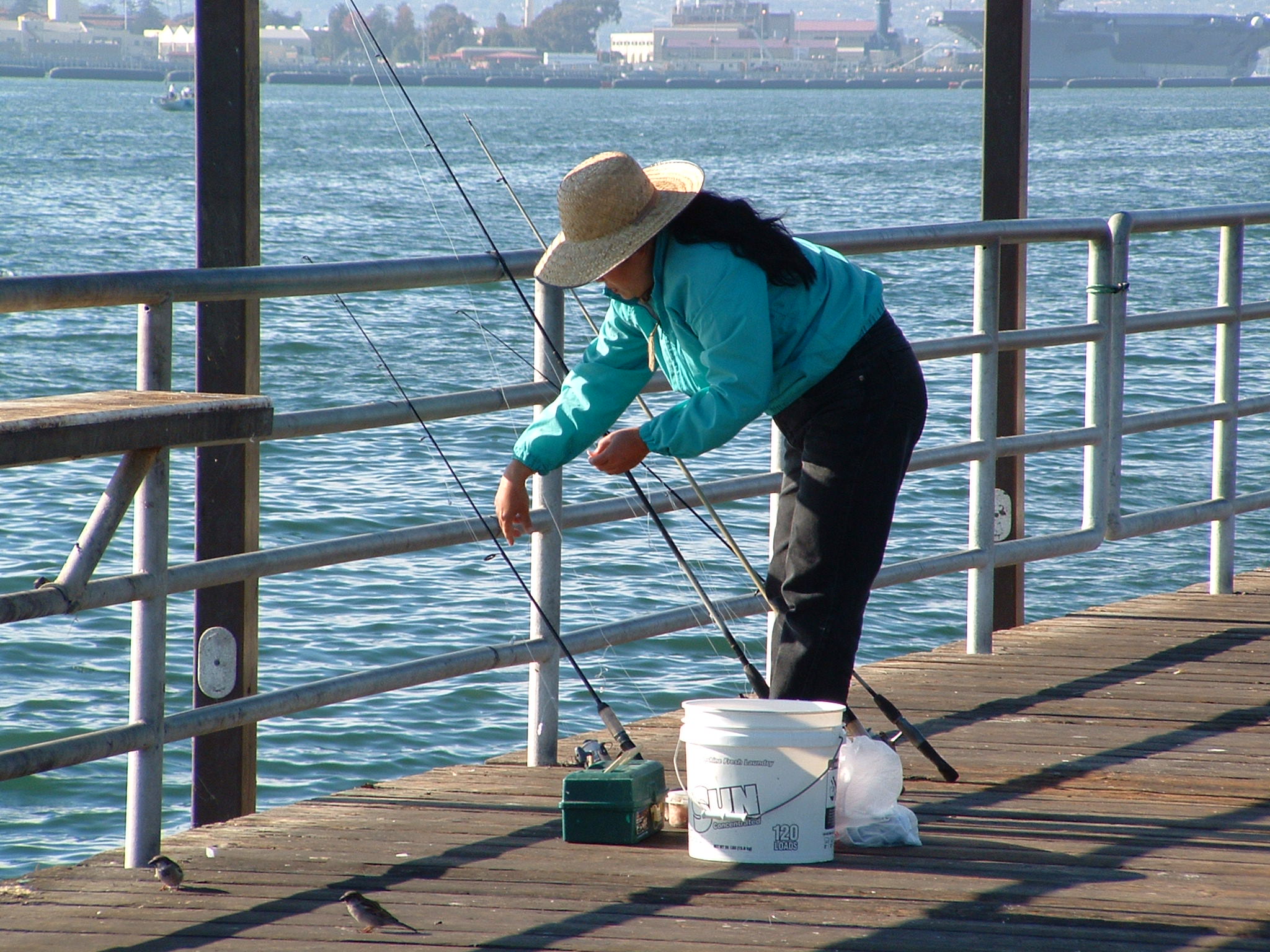 History of San Diego Bay
History of San Diego Bay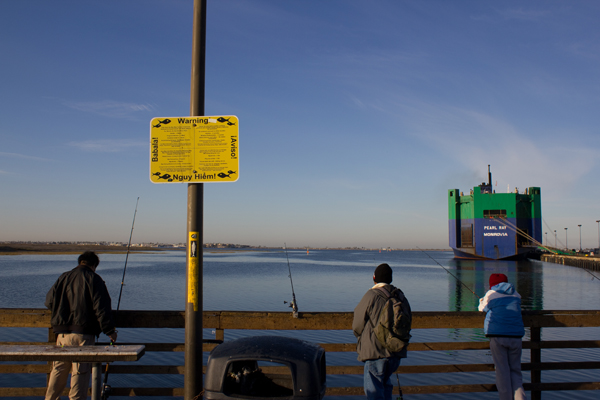
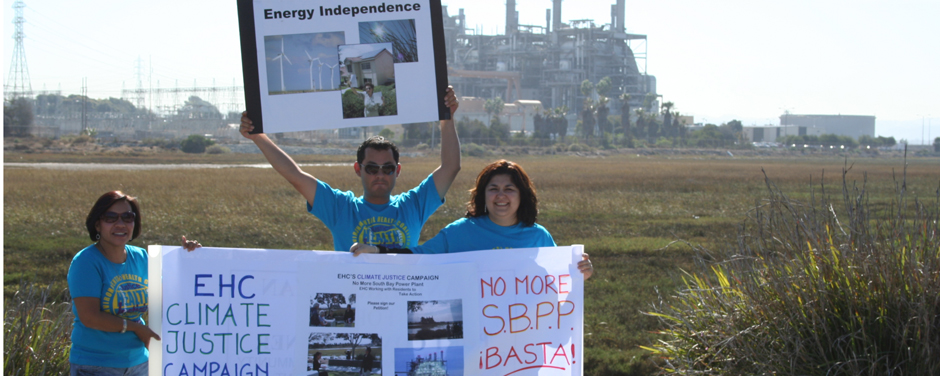 From 1960 until decommissioned in 2010, the South Bay Power Plant’s four generators polluted South San Diego Bay and emitted tons of toxic and greenhouse gases.
From 1960 until decommissioned in 2010, the South Bay Power Plant’s four generators polluted South San Diego Bay and emitted tons of toxic and greenhouse gases.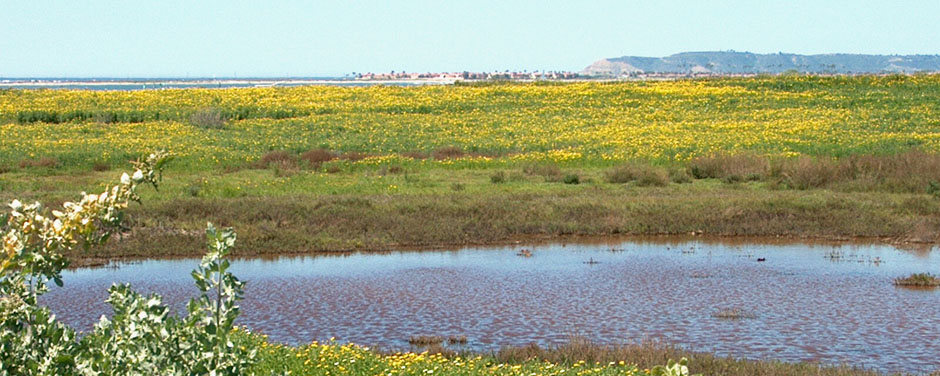
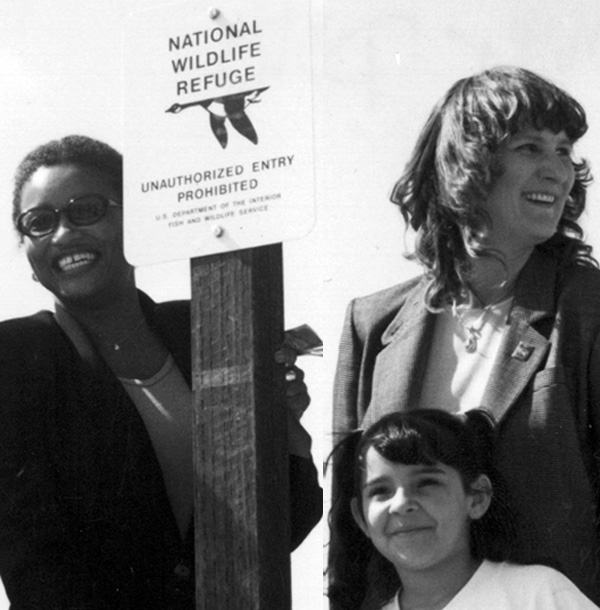 Most of the land surrounding San Diego Bay is controlled by the San Diego Unified Port District or the U.S. military. The last remaining piece of privately owned bayfront property was 125 acres between the Sweetwater Marsh Unit of the San Diego National Wildlife Refuge and a marina/commercial development on Port controlled land to the South. When developers proposed dense commercial and residential development at this site, environmentalists and South Bay residents objected.
Most of the land surrounding San Diego Bay is controlled by the San Diego Unified Port District or the U.S. military. The last remaining piece of privately owned bayfront property was 125 acres between the Sweetwater Marsh Unit of the San Diego National Wildlife Refuge and a marina/commercial development on Port controlled land to the South. When developers proposed dense commercial and residential development at this site, environmentalists and South Bay residents objected.